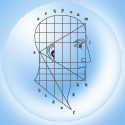 Earlier,
we measured the
length of the nose by looking at the distance from where the nose starts between
the eyes down to where it ends at the tip defining point. There is another
measurement that we can use. Compare the two pictures above with the two
pictures below.
Earlier,
we measured the
length of the nose by looking at the distance from where the nose starts between
the eyes down to where it ends at the tip defining point. There is another
measurement that we can use. Compare the two pictures above with the two
pictures below.
We can measure the
nasal length by looking at the "nasolabial angle." The
nasolabial angle, pronounced "NAY-zo-LAY-bee-uhl" is the angle formed by two lines: a line parallel to the bottom of the nose
(naso), and a line parallel to the upper
lip (labial). In the before picture,
her nasolabial angle is 88
degrees, a little smaller than a right angle, and in the after picture it is 108
degrees, noticeably more open than a right angle.
|
















